By George Kee
The success of Conte’s 3-4-3 has prompted many coaches to try their hand at the formation. This session aims to help players become comfortable with pressing a 3 man defense as the buildup is different than when playing 4 across the back. Using 3 Backs to spread the width of the field allows for more attacking players in front of the ball. Given this fact, it is important that the pressing team:
1. Makes play predictable by creating a strong side.
2. Moves players into the strong side to create a numerical advantage and apply double marking
3. Applies pressure to the man on the ball, covers passing lanes, and marks potential passing options
Area Size: Attacking Third
# Of Players: 8-12
Time: 30 minutes
Set up: Three zones 20 yards in length from the top of the penalty area. The width of the zones will cover the sideline to corner of the penalty area and the width of the penalty area. Defending forwards are placed on the cones in the middle zone and midfielders at cones just beyond. The 3 defenders looking to play out of the back are placed in each of the three zones to start, but can move freely once the ball is in play.
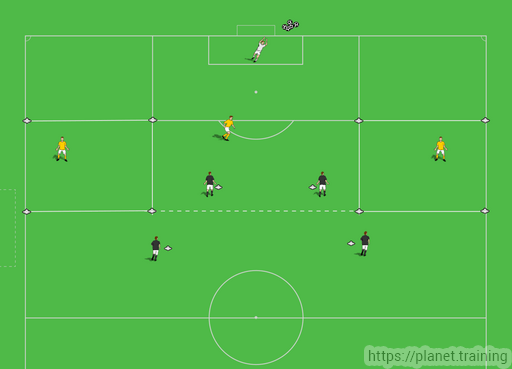
Execution: The Keeper starts play by passing to any of the 3 backs. The three backs will look to score by dribbling through the end line in the middle zone. The pressing team looks to force the ball into the wide zone. The midfielder on the strong side can enter the wide zone once the ball has been there for 3 seconds to apply double marking. Once the pressing team has won the ball they will attempt to score on goal with a counter attack within 8 seconds.
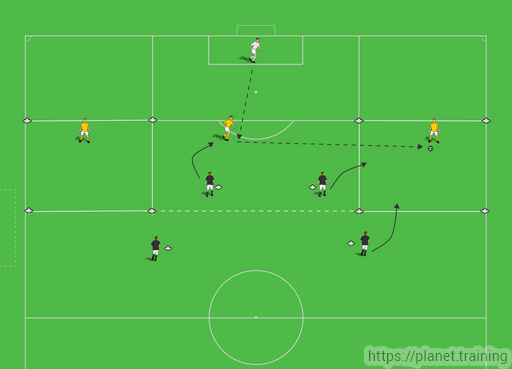
The Black team’s first priority is to deny penetration through the middle. Once the ball is in the wide area the pressing team should make coordinated movements to apply pressure on the ball. It is important that the first defender closes down very quickly while the ball is traveling in order to apply pressure immediately. Players should provide aggressive double marking in order to win the ball back while the other forward is positioned to cut off the pass back across the field.
• It is important to note that the player closing down should slow down 2-3 yards before reaching the player on the ball and assumes a good defensive body position (Knees bent, side on, on balls of feet) as to not get beat.
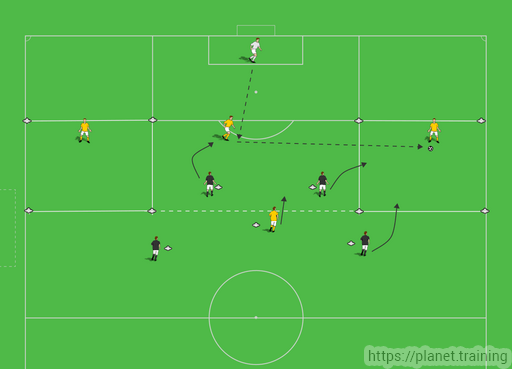
In the case of the ball being played back to the keeper the Black team should quickly return to starting positions as to not allow penetration through the middle. It is important that all players keep their eyes on the ball in transition in case of unexpected plays.
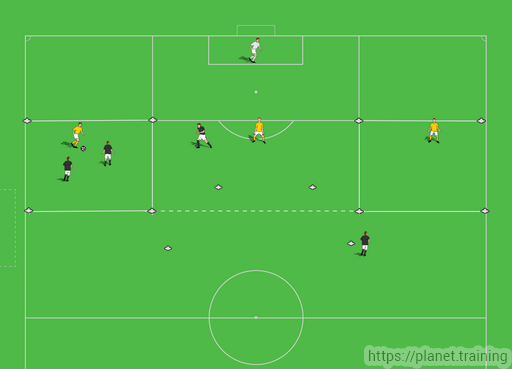
Once the Black team has won the ball back they should look to counter and score within 8 seconds. It is important to train the transition to attack as winning the ball so high up the field can create dangerous chances. Players should be capable of exploiting the 2v1 situation wide or playing the pass to the other forward in on goal. Once the double pressure has been applied wide the opposite forward should try to anticipate winning the ball back and move into an advance position ready for the counter.
5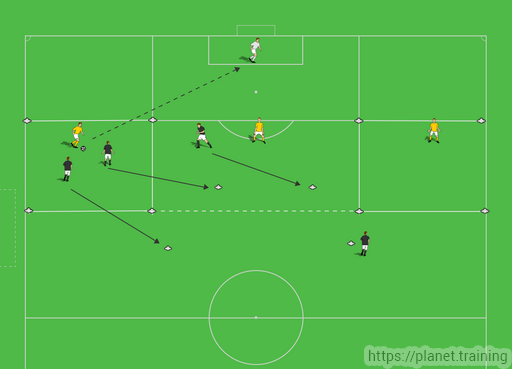
Progression: Add a midfielder to the Yellow team that plays only in the center zone. Adding an extra midfielder increases the importance of the pressing team to force play wide and deny penetration through the middle.
6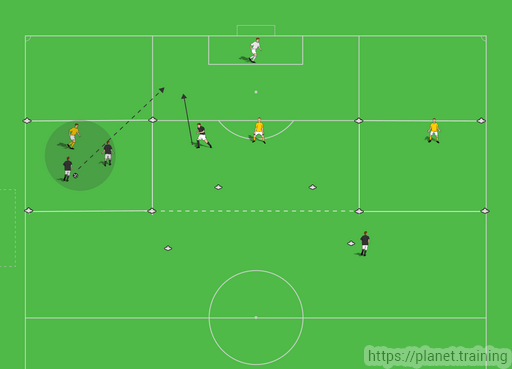
Coaching Points
• Players should deny central penetration and force ball wide
• Players should deny the pass back across the field
• Players should close down quickly and assume a good defensive body position
• Players should anticipate winning the ball back in order to take up an advanced position or the counter
Variations/Progressions
• Add Defensive midfielder for team playing out of the back
• Team playing out of the back can pass back to keeper
Originally from San Antonio, Texas, George moved to northern California in 2014 to take over as the head soccer coach at Lassen College. In his brief time with the program George has won an undefeated conference title, coached four players of the year, and won three Coach of the Year Awards.


